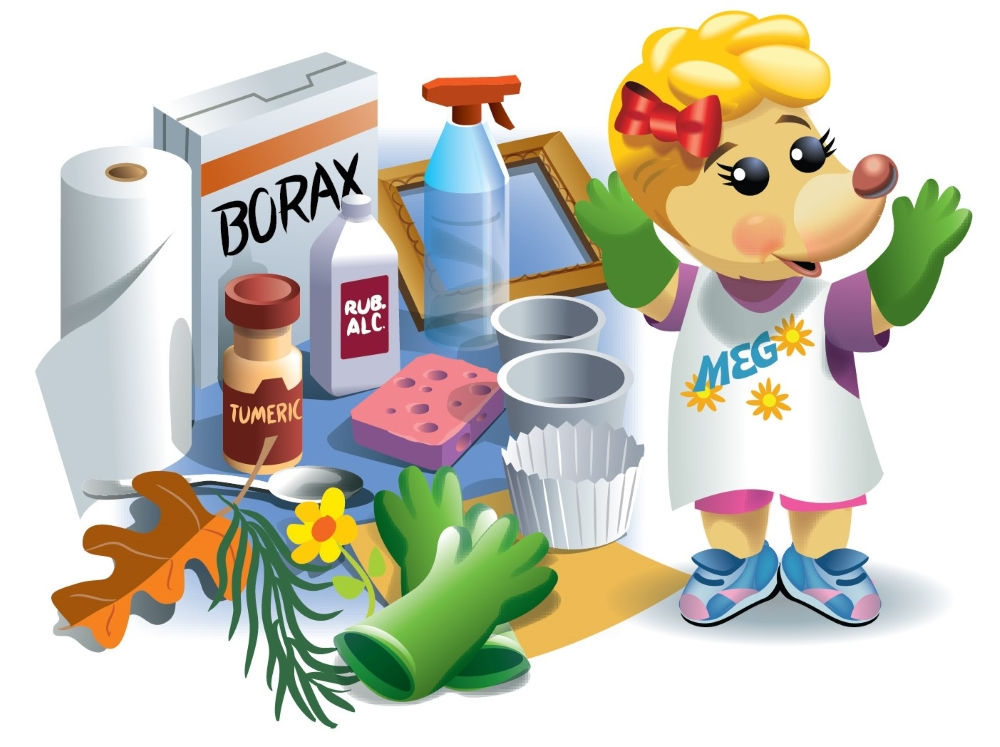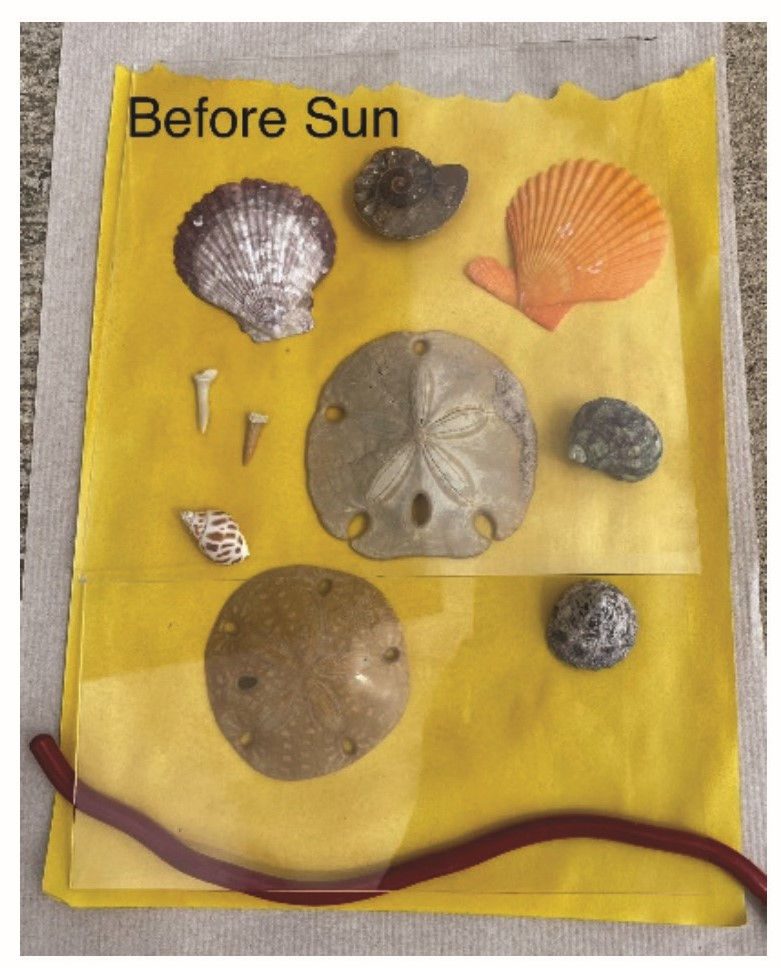By Jackie Trischman, Ph.D.

Introduction
Turmeric is a deeply yellow-orange colored spice commonly used in Indian food. But its uses extend far beyond just adding flavor. Curcumin, a chemical found in turmeric, is known for its health benefits and for its long-time use as a fabric dye.
This remarkable chemical is also a photosensitizer. That means it reacts in certain ways when exposed to light. This fact allows us to use in anthotype printing, a method popular in the 19th century. Anthotype printing uses plant products and exposes them to the sun to produce images on materials like paper and cloth. In this activity, you will create an anthotype print, also known as a sun print!
Safety Suggestions
- Splash goggles required
- Protective clothing suggested
- Do not eat or drink any of the materials used in this activity
- Rubber gloves suggested
Materials
- 1 teaspoon (about 5 mL) of turmeric powder
- 2 teaspoons (10 mL) of borax (found in the laundry section of grocery stores)
- 3 tablespoons (45 mL) of isopropyl rubbing alcohol
- ½ cup (120 mL) of warm water
- 1 sheet of copier or printer paper (make sure it’s non-glossy)
- The object you wish to print (a negative) — this could be a flower, a leaf, or other flat object
- Two 1-cup (about 240 mL) containers
- Spoon
- Sponge or brush
- Spray bottle
- Coffee filter or cheesecloth
- Photo frame glass (to weigh down your print as it develops)
- Paper towels
Procedure
- For the best results, do this activity on a sunny day.
- Wear gloves and an apron to protect your hands and clothes. Turmeric will stain anything it touches!
- Mix the turmeric powder and alcohol in one of the 1-cup containers.
- Strain the mixture by pouring it through a coffee filter or cheesecloth into the second container. Keep the liquid and discard the filter. This liquid is your dye.
- Do this next step out of the sunlight, in a place with low light. On a layer of paper towels, use the sponge or brush to cover the paper with dye as evenly as possible. Let it dry for 15 minutes. This will be your “film.”
- Place the object you want to print (the negative) on the paper. To make a print with the deepest colors, choose opaque objects (ones that light cannot pass through). If your object allows light through in different amounts, you will get different depths of color on your print. You are only limited by your creativity!
- Place your negative and film setup under the photo frame glass to keep the paper and negative flat.
- Now place your setup on a flat surface where the sun can shine on it. Once you position your setup, do not move it. The amount of time you leave your setup in the sun will depend on the time of day, the weather, and the level of contrast you want to give your image. When the background turns from a deep yellow-brown to a pale yellow, you are ready for the next step.
- While waiting for your image to “develop,” add the borax to the water, and pour it into the spray bottle.
- When you notice the background color of your image has become much lighter than the area under the negative, remove the negative from the sun.
- Place your print on a paper towel. Shake your borax solution well, and with the help of an adult spray a thin layer of it onto the print to keep your image from fading any more. Wait about 10 minutes and observe any changes to the color of the image in darker yellow.
- Let your image dry. To get a different effect, try making some changes. For example, you can change your dye concentration by using more or less turmeric. You can also choose a different type of negative object to put on the film or change how long you leave it exposed to sunlight. What effect did you like the best?
How does it work?
Curcumin in the turmeric absorbed the energy from the sunlight. This caused the curcumin to rapidly break down and lose its color. Once reacted, the dye bonds more strongly to the paper.
The curcumin was protected only while it was under the negative. If we stopped here, it would react to the light and the image would be bleached away within a few hours or days. The borax or sodium borate solution stops the photoreaction from happening and reacts with the curcumin in a way that darkens the colors.
Jackie Trischman, Ph.D. is Dean of the College of STEM at California State University, San Marcos.



